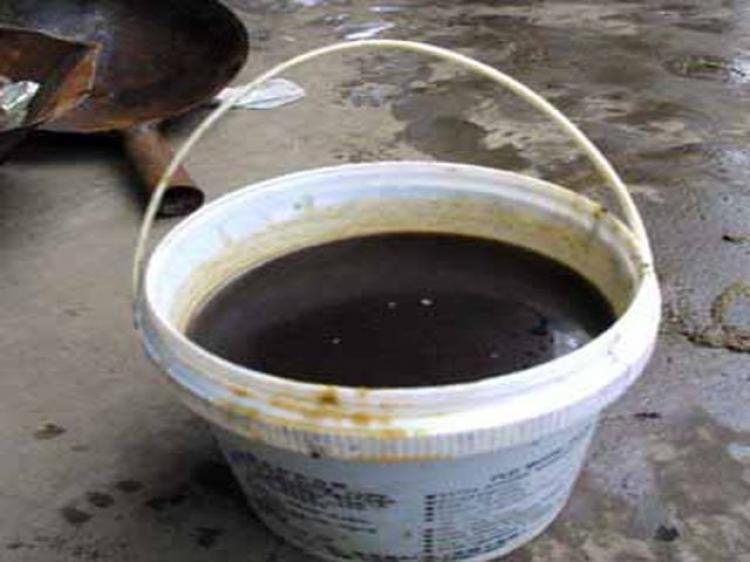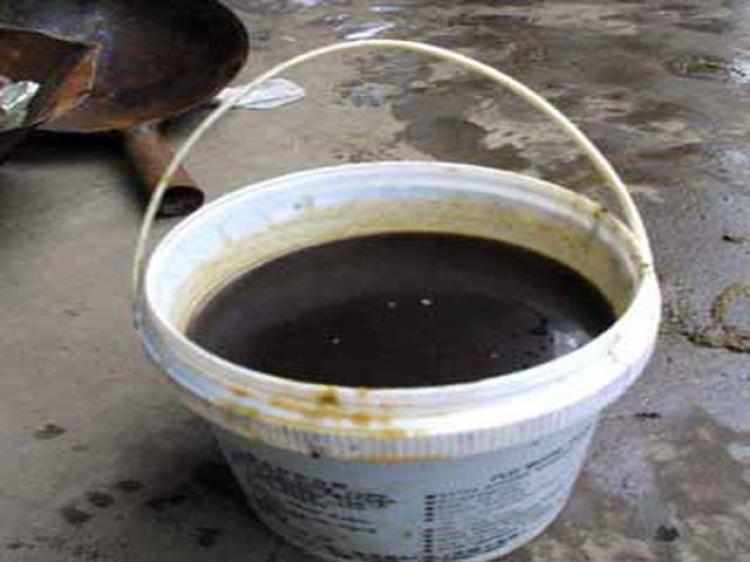A recent study estimates that one out of every 10 meals Chinese people eat in restaurants is cooked in recycled waste oil—that is, oil that has been dumped in the sewer, scooped out, processed, and resold at low prices. The recycled waste oil contains toxic chemicals that could cause adverse reactions or even cancer.
He Dongping, a professor at the Wuhan Polytechnic University, has been studying the problem for seven years. According to China Youth Daily, he found that China recycles an estimated two million to three million tons of waste oil per year. Combining that figure with the estimated 22.5 million tons of total vegetable oil and animal fat consumed by the Chinese per year, it is estimated that 10 percent is returning to people’s dining tables.
Medical research shows that a regular diet which includes recycled oil could cause developmental retardation, enteritis, swelling of the liver, heart, and kidneys. One of the major chemicals in the oil is aflatoxin, a powerful carcinogen which is 100 times more toxic than arsenic.
Nine senior students from the Food Science and Engineering College of Wuhan Polytechnic University conducted a study of waste oil practices in Wuhan, the capital of central China’s Hubei Province, and found that recycling has become a profitable business.
Restaurants discard their waste oil, and anyone can retrieve a bucket of the turbid, reddish paste from the sewer. By simple processes of filtration, heating, precipitation, and separation, the ill-smelling opaque waste becomes clear cooking oil. A person can earn US$11 per bucket and can retrieve an average of four buckets per day.
Refining one ton of it costs 300 yuan (US$43). When the recycled waste oil sells in the local market, the sales price is only half that of ordinary cooking oil. Thus, the recycler can make about 10,000 yuan (US$1,420) a month—as much as a well-paid white-collar worker.
The culinary culture of stir-fry generates a lot of waste oil in a Chinese restaurant. The students estimated that there are over 60,000 restaurants and food vendors in the Wuhan area. Together, they generate about 126,000 tons of waste oil.
The students also surveyed the restaurants in Wuhan. They found that some breakfast shops had two separate pots of oil. One with a label was the “good oil” and the other, without a label, was the “turbid oil.” A barbeque stand outside of the University put the recycled oil in a plastic bottle. It had an overly golden appearance and contained a lot of precipitates.
Recylced oil has existed for a long time in China, but in the past, it was only fed to pigs. Over the last 20 years, it has started to appear on people’s dining tables.
After certain refining processes such as distillation and color and odor removal take place, it is hard to tell recycled waste oil from “good oil” by its looks or its taste. Businessmen often mix recycled oil with good oil which makes it even harder to distinguish.
Professor He said that there is no single method that can effectively screen waste oil from different sources. When small amounts of waste oil are mixed with good oil, traditional methods are often inaccurate.
He believes the key to stop the recycling of waste oil lies with the government and not the test methods. Currently, there are no regulations regarding how to handle and dispose of restaurant waste—making room for the rise of an enormous gray industry.
According to He, there is thus a 1.5 billion–2 billion yuan (US$220 million–US$250 million) market for waste oil each year in China.
“The government must centralize the purchase of the restaurants’ waste oil and take care of it in order to stop this harmful business,” He said.
Read the original article in Chinese.
He Dongping, a professor at the Wuhan Polytechnic University, has been studying the problem for seven years. According to China Youth Daily, he found that China recycles an estimated two million to three million tons of waste oil per year. Combining that figure with the estimated 22.5 million tons of total vegetable oil and animal fat consumed by the Chinese per year, it is estimated that 10 percent is returning to people’s dining tables.
Medical research shows that a regular diet which includes recycled oil could cause developmental retardation, enteritis, swelling of the liver, heart, and kidneys. One of the major chemicals in the oil is aflatoxin, a powerful carcinogen which is 100 times more toxic than arsenic.
A lucrative business
Nine senior students from the Food Science and Engineering College of Wuhan Polytechnic University conducted a study of waste oil practices in Wuhan, the capital of central China’s Hubei Province, and found that recycling has become a profitable business.
Restaurants discard their waste oil, and anyone can retrieve a bucket of the turbid, reddish paste from the sewer. By simple processes of filtration, heating, precipitation, and separation, the ill-smelling opaque waste becomes clear cooking oil. A person can earn US$11 per bucket and can retrieve an average of four buckets per day.
Refining one ton of it costs 300 yuan (US$43). When the recycled waste oil sells in the local market, the sales price is only half that of ordinary cooking oil. Thus, the recycler can make about 10,000 yuan (US$1,420) a month—as much as a well-paid white-collar worker.
The culinary culture of stir-fry generates a lot of waste oil in a Chinese restaurant. The students estimated that there are over 60,000 restaurants and food vendors in the Wuhan area. Together, they generate about 126,000 tons of waste oil.
The students also surveyed the restaurants in Wuhan. They found that some breakfast shops had two separate pots of oil. One with a label was the “good oil” and the other, without a label, was the “turbid oil.” A barbeque stand outside of the University put the recycled oil in a plastic bottle. It had an overly golden appearance and contained a lot of precipitates.
Recylced oil has existed for a long time in China, but in the past, it was only fed to pigs. Over the last 20 years, it has started to appear on people’s dining tables.
No current regulations
After certain refining processes such as distillation and color and odor removal take place, it is hard to tell recycled waste oil from “good oil” by its looks or its taste. Businessmen often mix recycled oil with good oil which makes it even harder to distinguish.
Professor He said that there is no single method that can effectively screen waste oil from different sources. When small amounts of waste oil are mixed with good oil, traditional methods are often inaccurate.
He believes the key to stop the recycling of waste oil lies with the government and not the test methods. Currently, there are no regulations regarding how to handle and dispose of restaurant waste—making room for the rise of an enormous gray industry.
According to He, there is thus a 1.5 billion–2 billion yuan (US$220 million–US$250 million) market for waste oil each year in China.
“The government must centralize the purchase of the restaurants’ waste oil and take care of it in order to stop this harmful business,” He said.
Read the original article in Chinese.






